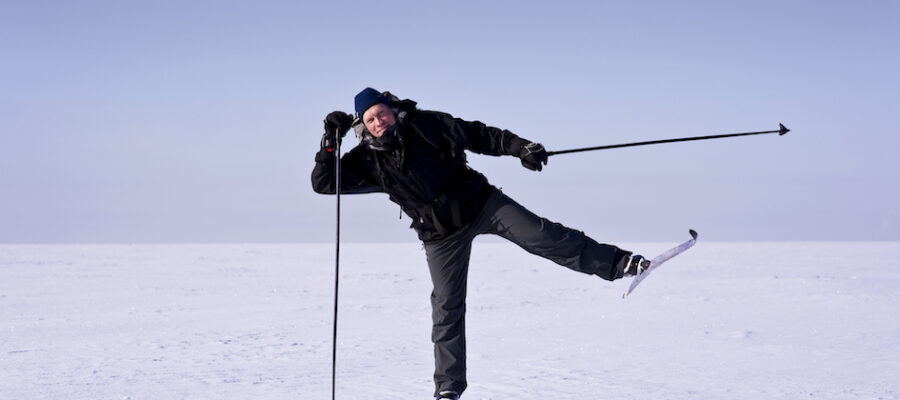As a beginner in cross-country skiing, mastering fundamental techniques is essential for a safe and enjoyable experience in the snow. Here, we’ll introduce you to the basic techniques you need to get started: balancing on skis, gliding efficiently, and stopping confidently.
1. Balancing on Skis
Balancing on skis is the foundation of cross-country skiing. Here’s how to find your balance:
- Weight Distribution: Stand with your feet hip-width apart and distribute your weight evenly on both skis. Avoid leaning too far forward or backward.
- Relaxed Posture: Maintain an upright posture with a slight forward lean from your ankles. Keep your knees slightly bent to absorb uneven terrain.
- Arms and Poles: Hold your ski poles with a relaxed grip. Your arms should move in sync with your legs as you glide. Use your poles for balance and propulsion.
- Gaze Ahead: Look forward in the direction you want to go, keeping your head up and your eyes on the trail.
- Practice Balancing: Practice balancing on your skis by standing still and shifting your weight from one ski to the other. This helps you get a feel for the skis’ stability.
2. Gliding Efficiently
Efficient gliding is what makes cross-country skiing such a joyful experience. Follow these steps to glide smoothly:
- Diagonal Stride (Classic Skiing): In classic skiing, practice the diagonal stride. Push off one ski while gliding forward on the other. Coordinate your arm swing with your leg movements for balance and propulsion.
- Skating Technique (Skate Skiing): In skate skiing, focus on the skating technique. Push off to the side with one ski while transferring your weight to the other ski. Move your arms in a coordinated manner to maintain balance and power.
- Practice on Gentle Terrain: Begin on a flat or gently sloping terrain to practice gliding. Focus on the rhythm of your movements and work on maintaining a smooth, continuous glide.
- Use Gravity: On downhill sections, let gravity assist your glide. Keep your weight centered over your skis, and use your poles for stability.
- Mastering Kick and Glide: In classic skiing, work on your kick and glide technique. The kick is the moment when you push down on the grip zone of your ski, and the glide is when you extend your leg and slide forward. Find a rhythm that suits your pace and terrain.
3. Stopping Confidently
Knowing how to stop is crucial for safety. Here’s how to stop effectively:
- Snowplow (Classic Skiing): In classic skiing, use the snowplow technique. Push the inside edge of your skis outward while applying pressure to create a wedge shape. This will slow you down and eventually bring you to a stop.
- Skating Snowplow (Skate Skiing): In skate skiing, use a similar technique by pushing the edges of your skis outward to create a snowplow. Use your poles for added stability and control.
- Practice Stopping: Find a gentle slope and practice stopping on both skis and with one ski in front of the other. Develop the ability to control your speed confidently.
- Snowplow Wedge (Both Styles): In both styles, you can increase your stopping power by forming a deeper wedge shape with your skis when needed.
- Emergency Stop: In case of an emergency, sit back slightly and push your weight onto your heels to come to a quick stop. This should be used only when necessary, as it can lead to a fall.
Remember: As a beginner, start with gentle terrain and gradually progress to more challenging trails as you become more confident in your balancing, gliding, and stopping skills. Take lessons from experienced instructors if possible, as hands-on guidance can greatly accelerate your learning process. With practice and patience, you’ll soon find yourself gliding with grace and ease through the winter wonderland of cross-country skiing.

